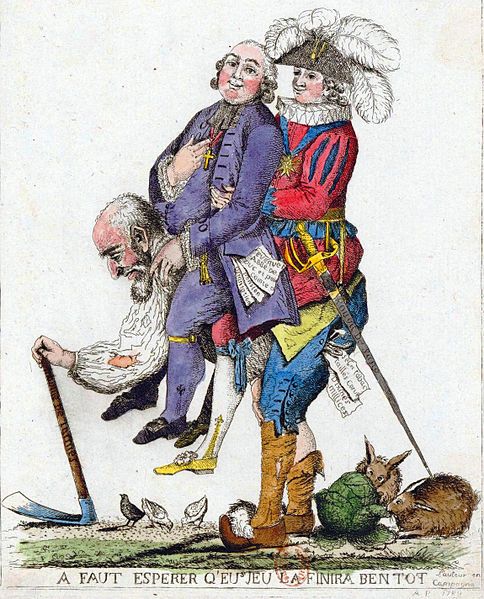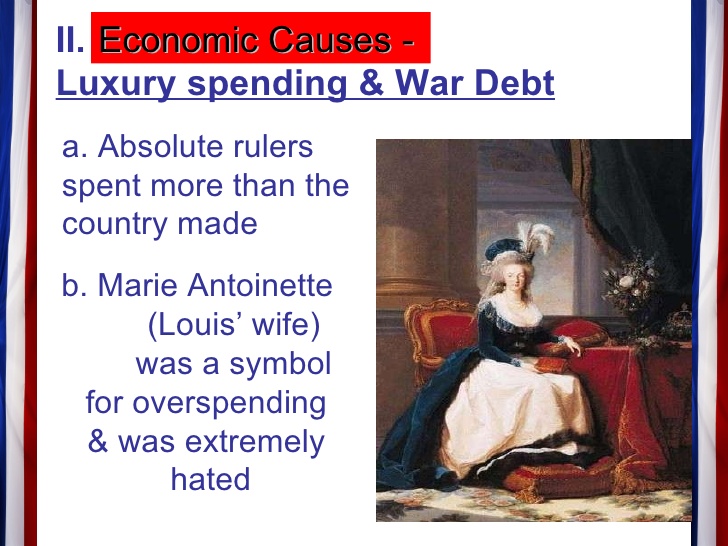U1L2 Shaping Nationalism
| Site: | MoodleHUB.ca 🍁 |
| Course: | Social 20-2 RVS |
| Book: | U1L2 Shaping Nationalism |
| Printed by: | Guest user |
| Date: | Tuesday, 11 November 2025, 3:57 PM |
Description
U1L2
Introduction
French Revolution and Shaping Nationalism
Key Issues
To what extent should we embrace nationalism?
To what extent do external and internal factors shape nationalism?
When you meet someone from the same nation, are there common understandings you readily share? Is there an easy acceptance of each other as members of the same nation?
In this lesson you will continue your inquiry into the relationship between nation, nationalism and identity as you explore examples of how a nation develops a sense of nationalism. You will also consider the role of historical, social, economic, geographic and political factors on the development of French nationalism.
Each of the following lesson inquiries will develop understandings to help you respond to the section question:
- Was there a French nation before 1789?
- Why and how did the French Revolution take place?
- How did nationalism develop during the French Revolution?
- How did Revolutionary France influence the spread of nationalism?
- Is nationalism a shared internalized feeling?
 |
TERMS collective consciousness |
Lesson
![]() RESOURCES
RESOURCES
Watch the following introduction to the French Revolution and nationalism.
Read and refer to Chapter Two
as your resource for completing this lesson's assignment.
Understandings of Nation
Read the story “France Before 1789 ”
![]() LESSON
LESSON
People have not always enjoyed the freedoms we, as Canadians, sometimes take for granted today. Under the Old Regime in France, a group called the Third Estate,
by far the largest group, enjoyed virtually no rights yet bore the greatest burden for
taxes. Christians were powerful and the Church was the center of society. It controlled
education, healthcare and culture. The government and the Church worked together to control the people. Over the years, the people from the
Third Estate began to question
the feudal system. Society was ripe for change and nationalism was on the rise.
This age was referred to as the Dark Ages because so many of the cultural, political and educational advances made by the
Greeks and Romans were lost. As time passed
and nation states developed, enlightened philosophers studied the democratic ideas of Ancient Greece and Rome and asked why these ideals were no longer applied.
As enlightened ideas
spread, citizens of the Thirteen Colonies, began to protest British control and waged a war against them. This is what lead to the French Revolution.
To understand nationalism, it is important to analyze how nationalism developed in the past and address the following questions:
- What happened during the French Revolution?
- Why did it happen?
To answer these questions, it is essential to understand the following Estates System and the factors that gave rise to nationalism.
Watch The French Revolution
to gain an understanding of the connections to France that people held
and the background to how nationalism developed for the French nation.
Historical Factors
The Bastille was a Paris prison where, it was rumoured, the king locked up people who spoke out against him. On July 14, 1789, about 600 angry Parisians successfully attacked the Bastille and took control of this symbol of tyranny. This event is usually considered to be the beginning of the French Revolution, and July 14 is now celebrated as a national holiday in France.
Watch "The French Revolution in a Nutshell" for a summary of the events...

Estates System
In 1789, this ruling elite made up about four percent of France's total estimated population of 26 million. The remaining 96 percent were considered common people. The ruling elite paid few taxes, but their power enabled them to accumulate great wealth by collecting taxes, rents, and other fees from the common people.

As a result, the French economy was in chaos by the late 1780s. The decades of war had drained the treasury, and the country was nearly bankrupt. To raise money, Louis XVI decided that the people, including French aristocrats, should pay more taxes.
.
|
These conditions combined to destroy grain crops and create a shortage. As the shortage worsened, the prices of flour rose. As a result, many people could no longer afford to buy bread, which was a staple of their diet.
|
|
Political Factors
By late summer 1789, the National Assembly had put the finishing touches on the Declaration of the Rights of Man and of the Citizen. This political action, which abolished the traditional privileges enjoyed by the monarch, the clergy,
and the aristocracy, sparked a bloody struggle that eventually led to the creation of a French nation based on new principles. It establish France as a secular - non-religious - republic.
The 17 articles of the declaration set out these principles and became the basis of the new French constitution. This document has influenced all subsequent declarations and charters of rights. |
Backed by the newly approved Constitution of 1793, Robespierre and the Committee of Public Safety began conscripting French soldiers and implementing laws to stabilize the economy. For a time, it seemed that France’s fortunes might be changing. But Robespierre, growing increasingly paranoid about counterrevolutionary influences, embarked upon a Reign of Terror in late 1793–1794, during which he had more than 15,000 people executed at the guillotine. When the French army successfully removed foreign invaders and the economy finally stabilized, however, Robespierre no longer had any justification for his extreme actions, and he himself was arrested in July 1794 and executed.
The new government was week and set the stage for Napoleon's takeover. Napoleon Bonaparte led France at an exciting time in history. France had recently overthrown a powerful king and survived a year of bloodshed (during the Reign of Terror). You would think the people of France would have wanted a democratic leader to replace the old monarchy. But, Napoleon was far from a democratic man...read the notes below to learn more about his form of rule.
Assignment
 Open a new Word document (or pdf). Label it SS20U1L2A.surname
Open a new Word document (or pdf). Label it SS20U1L2A.surname
In the document, complete part A as outlined below.
SUBMIT this assignment using the Assignment Folder for Unit 1 Lesson 2
A. Complete the following France after 1789 assignment.

![]() B. Using all the text and resource links within this lesson and online resources, write the French Revolution Quiz (open book).
B. Using all the text and resource links within this lesson and online resources, write the French Revolution Quiz (open book).
NOTE: this quiz is worth marks.
PRACTICE EXERCISE:
Read the following quote between Barras and Robespierre (below). Then, for your own study purposes, answer the following questions: Do NOT submit.
François Barras: This would make you dictator of France.
Maximilian Robespierre: Yes.
François Barras: We didn't storm the Bastille to make any man dictator.
Maximilian Robespierre: I'm not "any man".
What does this quote convey (or tell) about Robespierre?
What were Robespierre's actions during the Reign of Terror and what do they suggest about him?
How do Robespierre's actions, during the Reign of Terror, verify what is conveyed in his statement?
Refer to the following two links to help complete this assignment:
Robespierre and the Reign of Terror
Evaluation and Conclusion
Evaluation
France After 1789 /10
Conclusion
In this lesson you gathered background on the conditions existing in France before revolution. You examined what factors (historical, social, political, economic, and geographic) were in place that would later shape the emergence of France as a nation and the shared collective consciousness of the French people that they were of the same nation.
The events of the French Revolution began with the calling of the Estates General. It led to almost one decade of change for the people of France. Many historians mark the rise of Napoleon Bonaparte in 1799 as the leader of France as the end of the revolutionary period.
